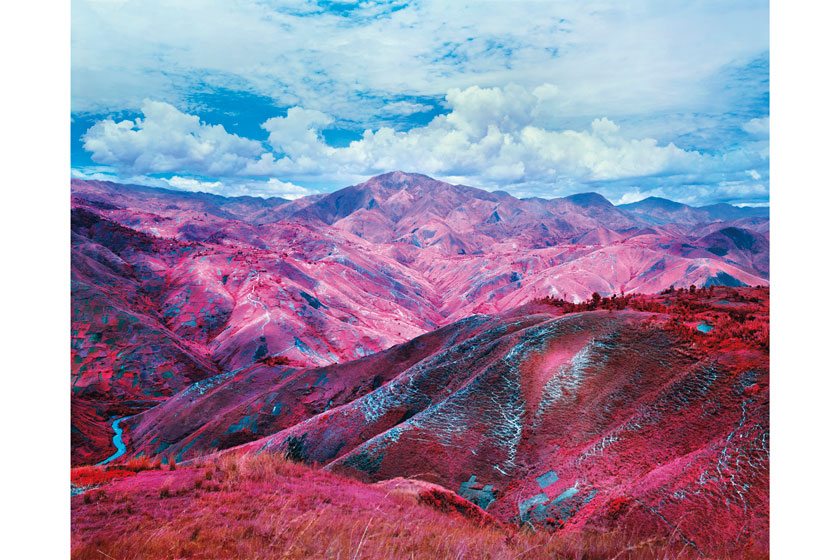The C&TH Guide: How to Collect Photographs
Put your money where your walls are and start your very own photography art collection
This post may contain affiliate links. Learn more
Is this year the year you start your art collection? If you’ve decided to invest in photographs, you should read our guide to buying and collecting photographs, put together with Christie’s London expert Jude Hull.
How to Collect Photographs
Jude Hull, Specialist in Photographs at Christie’s London gives us her top tips when it comes to starting your photography collection.
Buy What You Love
‘I always recommend that you follow your instincts. Photographs can be an investment but it is most important to buy what you like. If you are starting out, decide on the type of collection you want to pursue. If you wish to buy decoratively, rarity might be less important to you. Does a particular period or genre of art interest you? Consider whether photography fits into that history. If you buy what you love, at the very least you will enjoy it for many years to come.’ – Jude Hull, Christie’s London
When we value a photograph at Christie’s, we consider many things. The photographer, the image, the date the image was printed and the condition of the overall work. Understanding these factors will be helpful as you start to build a collection.

TYLER SHIELDS (b. 1982)
Glitter Mouth, 2012
chromogenic print, flush-mounted on board
72 x 48 in. (182.8 x 121.9 cm.)
This work is number 3 from the edition of 3.
Estimate: £8,000 – 12,000
Who’s the Artist?
Firstly, you may wish to consider the photographer, who are they? Where do they fit in the history of art and the history of photography? It is important to pay attention to the myriad of voices that speak in support of an artist. When museums or major private collections begin to acquire works, you know that trained eyes are seeing the real thing.
The Image
Knowing the photographer’s work, we can better consider the subject. How does the subject relate to their wider body of work? Is the photographer’s identity in the image? Is it totally unknown and therefore rare, or unknown because it is less interesting? It may just speak to you, regardless.
What’s the Print Date?
Photographs are not necessarily printed at the time the image is taken. The term ‘vintage’ references works made in the generic style in which the photographer was printing, near the date the image was taken. Possibly more than subject, the print date is one of the most determining factors affecting the value of a work. The market regards early prints with the highest quality, and these prints can be more expensive as a result. Our cataloging will indicate print date so it is as clear as possible, for example, when a photograph is printed many years after the date of the image, such as modern prints of celebrated historic images, the print is described as ‘printed later’.

RICHARD MOSSE (B. 1980)
Remain in Light, 2015
chromogenic print
image: 40 x 50 in.
This work is from an edition of 5.
Estimate: £15,000 – £20,000
What’s the Condition?
In any field, no less so in art, connoisseurship is required; questions of condition are even greater with photography precisely because of the fragility of photographic objects. By holding and examining photographic works in person, you learn much more than you can from just an image on a screen. The condition of a photograph generally, but not always, affects the overall value of the work. In early experiments in photography, condition issues are to be expected given the age of the print and that the process was not yet fully developed. Contemporary photographs should be in excellent condition considering they have a more recent print date. Condition should be considered in light of the overall impact they have on the image and whether they are visible at a distance.
Photography is by its very nature reproducible, so many works on the market are produced in editions. For first time collectors this can raise questions surrounding rarity. Editioning is a relatively new phenomenon in photographic practice and so it is more typical for a modern print to come from an edition. When it is not specified, consult a specialist who will use their knowledge of the photographer’s market to advise how many prints may exist.
Ask Questions
And lastly, don’t hesitate to ask questions. Specialists and gallerists are always happy to discuss the history and context of a print, quality and its rarity. There is a story behind every great image and specialists like nothing more than to answer questions and share their enthusiasm for the medium.
Christie’s next sale of Photographs in London will be at the King Street saleroom on 18 May. The viewing opens on 13 May and is free and open to all.
READ MORE: How to Buy at Auction / How to Buy Art / At Home with a Gallery Owner
